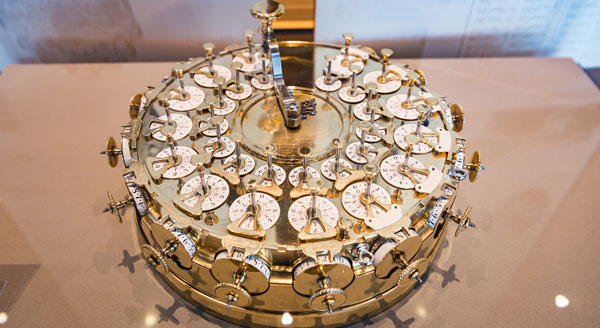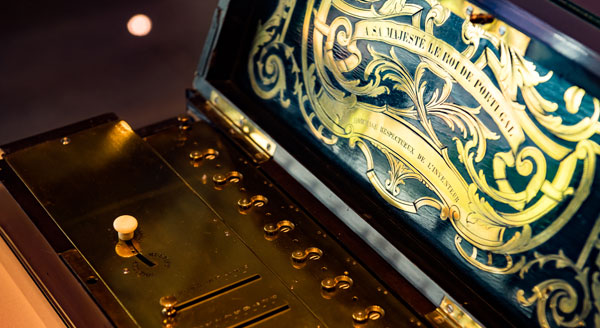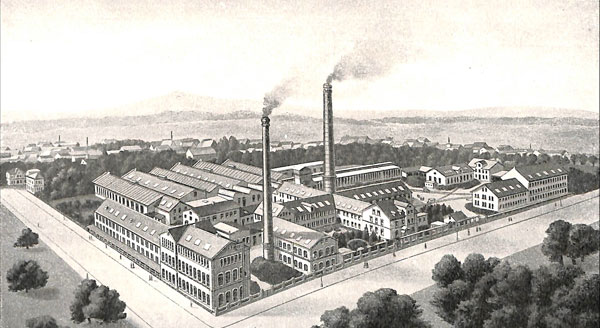The first calculating machines were invented in 1623 by Professor Wilhelm Schickard of Tübingen and in 1642 by the French scholar Blaise Pascal. Up to the middle of the 19th century, dozens of scholars and inventors designed calculating machines but none of them ever came to be produced in series.
The pinwheel calculating machine
Series production of calculating machines did not come about until the middle of the 19th century. In Paris, Thomas de Colmar - an entrepreneur in the insurance sector - had about 800 of his arithmometers manufactured by 1870. His invention handled the four fundamental operations of arithmetic and operated on the stepped-drum principle. From the 1870s, it was copied by various European companies. The pinwheel calculating machine, which had been invented by the Swedish engineer Willgodt T. Odhner in Russia and patented in 1878, became the most widespread calculating machine for all four fundamental operations of arithmetic in Europe. It was not only smaller than the stepped-drum machine but also cheaper to make. The pinwheel calculating machine was also copied by numerous companies throughout the world.Comptometer - key-operated adding machine
Whereas the European calculating machine market was dominated by machines for all four fundamental operations of arithmetic, manufacturers in the USA initially focused almost exclusively on adding machines. In 1887, a mechanic named Dorr E. Felt patented his Comptometer - a key-operated adding machine that is still the fastest in the world. At almost the same time, William S. Burroughs, a former accountant, introduced the printing adding machine that bore his name. These two inventions led to the establishment of large calculating machine companies.Millionaire - direct multiplication calculating machine
Even after stepped-drum and pinwheel calculating machines and adding machines had turned into mass products, inventors still continued to introduce new types of machine. Some of the most successful of these were the Millionaire, a direct multiplication calculating machine that was introduced in Switzerland in 1892, and the proportional-lever and ratchet calculating machines, which were developed by the German construction designer Christel Hamann.


